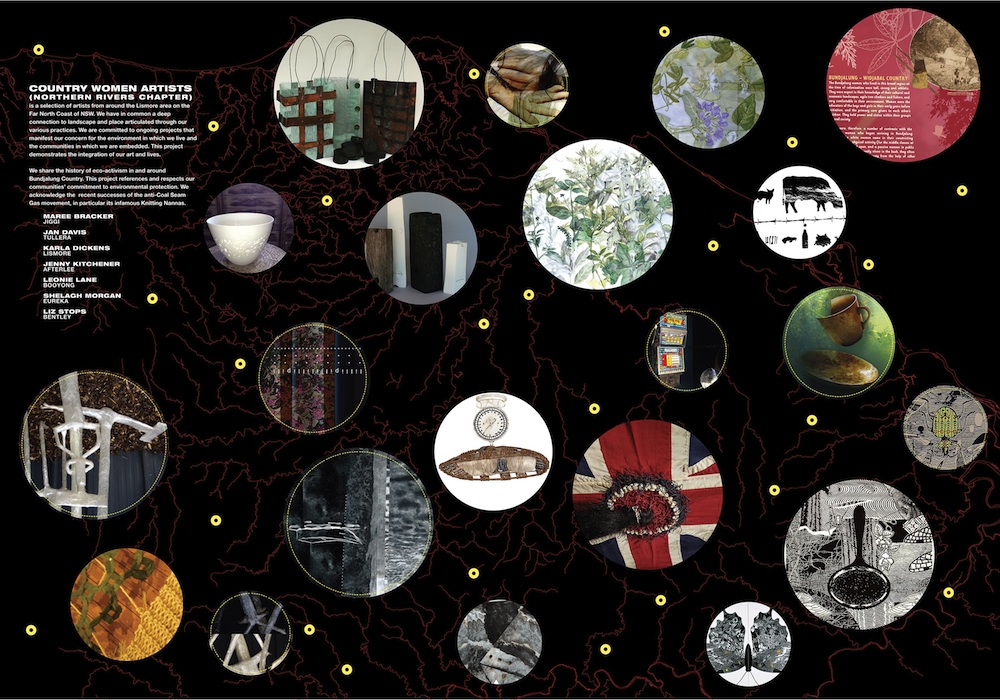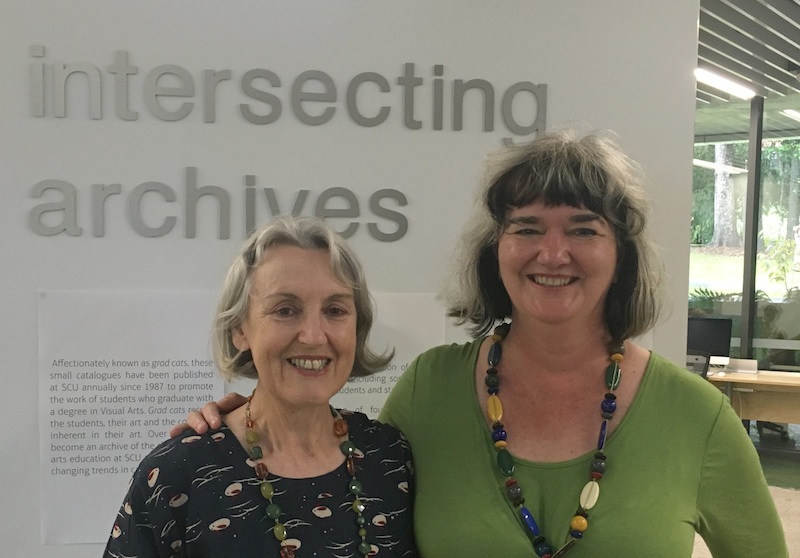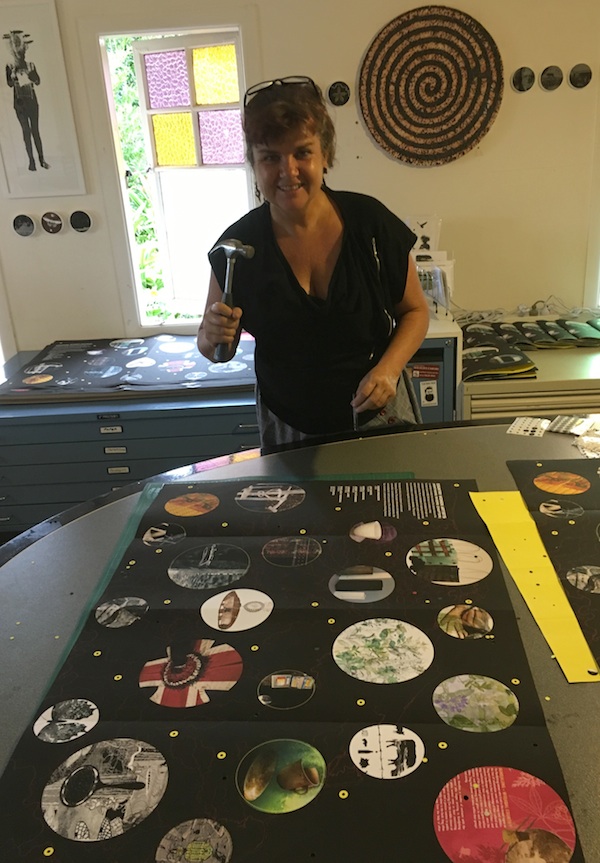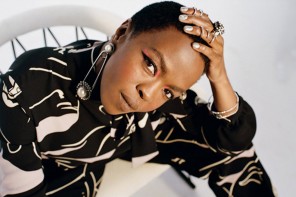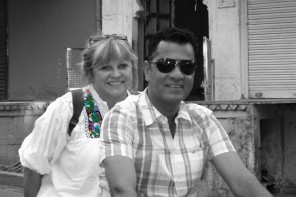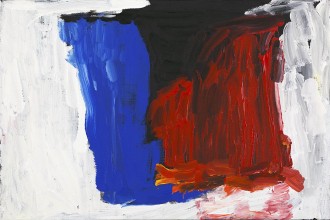The Future Feminist Archives (FFA) has been a year-long project across New South Wales during 2015-2016. Artist Leonie Lane, the catalogue coordinator at Southern Cross University for 18 years, and fellow artist and academic Jan Davis were appointed to oversee the Northern Rivers contribution to the project.
“Any active creative person will tell you – archives are important,” says artist Leonie Lane. “They hold evidence of the past for the present and the future. What is collected and held provides material for research, interpretation and creative investigations.”
The Future Feminist Archives project sought to forge connections between diverse community histories and current ideas relating to feminism in response to growing interest in the role of archives. Based at Sydney University and funded through Arts NSW. It will ultimately create 250 new entries in the DAAO (Design and Art Australia Online) with a regional focus.
“Originally the FFA thought of Lismore because the region had – and has – a history of activism,” says Lane, “and initially they approached the Lismore Regional Gallery, but curator Kezia Geddes felt that LRG collection didn’t necessarily reflect the activism and feminism that she had seen in the community so she suggested the FFA group work with SCU where she knew was a strong history of such things.”
Lane, who had already participated in an FFA exhibition of feminist poster makers at the Verge Gallery and the Power Institute, Sydney University (Girls at the Tin Sheds – catalogue in SCU library collection) in February 2015, and Geddes brought artists and former SCU staff members Maree Bracker and Jan Davis on board to explore ideas. “We were really excited by two a particular SCU archives that Jan and I know really well,” she says, “the SCU Library Artists’ Book Collection and also the collection of annual Visual Arts Graduating Students Exhibition catalogues.”
The first part of the project was to intersect archives from the Southern Cross University Collection. SCU’s collection of artists’ books began in 1998 and is one of only four collections of artists’ books held by Australian universities (the others, starting as early as 1990, are at Monash University, Deakin University and the University of Queensland). The teaching of artist’s books has grown enormously over the past 15 years and the Southern Cross collection contains 116 works, including books by highly regarded Australian artists Bea Maddock, Judy Watson, Normana Wight, Robert Jacks and Peter Lyssiotis as well as European artists such as Christian Boltanski, Anselm Kiefer and Dieter Roth.
“It was great to have a way to focus on a particular group of artists,” says Lane, “and so the works included in this exhibition are selected from the SCU collection. They are specifically by women who either graduated from SCU or taught at SCU or both – and so they’re therefore also represented in the other archive, the SCU graduating students catalogues.”
Artists’ books have many diverse forms – some resemble a traditional codex book with which we are familiar, others reference books in some – often abstract – way.
The culmination of three years full time study at SCU is represented annually as the ‘Visual Arts Graduating Students Exhibition’. Since 1987, each year ‘the grad show’ has been supported, acknowledged and accompanied by the ‘grad show cat’ or catalogue, says Lane. “The catalogue is an important archive, resource and promotional tool for teaching and learning of creative arts at Southern Cross University and since 2000 the catalogues have had a wider audience as the paper version has been made available as an animated book on the Creative Arts Showcase for SCU. The catalogues house a representation of the culminating installation of each visual arts student’s studio practice outcomes, which often marks an important stage in the featured artists visual arts career where thinking and practice converge and move to a higher level.”
Since 2002, special sections have been added to showcase outcomes of Honours, Masters and PhD candidates. Looking across the collection of catalogues, Lane found the evolution and impact of digital technology was obvious. “It was interesting to observe that timeframe as the early manual cut and paste layout gave way to graphic design software,” she says.
Lane found it fascinating to bring between 40-60 divergent artists practices under the one roof as a cohesive exhibition using the covers of one book as an umbrella entity. “It embraced a unity,” she says, “notions of teamwork, collaboration and shared capacity were real concepts and seen as a collection, these catalogues trace changes in design influences, styles and attitudes. Sustainability issues were also really important and over time the catalogues have become an extraordinary resource for everybody – potential, new and current students and high school students to name a few, and they provide future references for further research and for drawing into other archives like the DAAO – Design and Art Australia Online.”
Interestingly too, the catalogues provides opportunities to map social shifts and changes – for example the representation of men and women in the program. “It’s interesting to note that in 1997 there was a 50/50 split male/female in the graduating year,” says Lane. “Less than 20 years later, in 2014, 32 females and only 10 males were represented. They’re also a record of a change of emphasis in teaching visual arts, and we can note the rise in the moving image in installation practice over time and across traditional studio areas.”
As Lane and Davis looked at themes emanating from women artists in the graduate catalogues (and by implication from the local community and from the teaching program) they saw evidence of what might be called an eco-feminist thread. (Ecofeminism being an activist and academic movement that sees critical connections between the domination of nature and the exploitation of women.)
The first part of the project saw Jan Davis and Lane curate an installation of selected women artists – their artists’ books and their corresponding pages in the Grad Show catalogues – called ‘Intersecting Archives’ at the new Southern Cross University Library in Lismore in March 2016. “The women we chose articulated concerns about environmental urgencies expressed through materials and practices traditionally associated with women’s crafts,” says Lane. “Within the intimate space of a book, their keen observations about key issues of climate, land, water, energy and community are proclaimed. We also found that when we looked at the artists as a whole broader notions of place and belonging and the long history of land occupation were explored. Mainstream feminist artist practice concerning the body is often played out employing traditional women’s crafts such as knitting and sewing, transformed with, for instance, sensuality or humour, and with references to art history and the arts industry.”
Stage 2 of the project, Country Women Artists: Northern Rivers Chapter – Future Feminist Archives (FFA) report, saw Lane and Davis reducing the number of artists to a core group who share a connection to landscape and place. “We included Maree Bracker, Jan, Karla Dickens, Jenny Kitchener, Shelagh Morgan, Liz Stops and myself,” she says. “We all express our connection to our environment through our various practices and we’re all committed to ongoing projects that manifest our concern for the environment in which we live and the communities in which we are embedded. We also acknowledged the creative activism and recent successes of the anti-Coal Seam Gas movement, in particular its infamous Knitting Nannas.” (Both Maree Bracker and Liz Stops had been Knitting Nannas in the early days of the Bentley blockade.)
All the regional participants from all over NSW were asked to table a ‘report’ on their investigations on a 700 x 1000mm paper format. From there the seven artists designed a poster that is folded to an artists book/catalogue – which referenced the initial archives, and which records a brief summary of eco-feminist activity. “One side is painted flat yellow, scored, slit and folded into book form,” says Lane. “Holes are punched into the paper suggesting locations, issues and connections. These are reinforced with black paper ring reinforcements referencing the tradition of archives. The yellow and black – nature’s warning colours – alludes to our now infamous and global Knitting Nanna activism during the Anti CSG campaign at Bentley and beyond.”
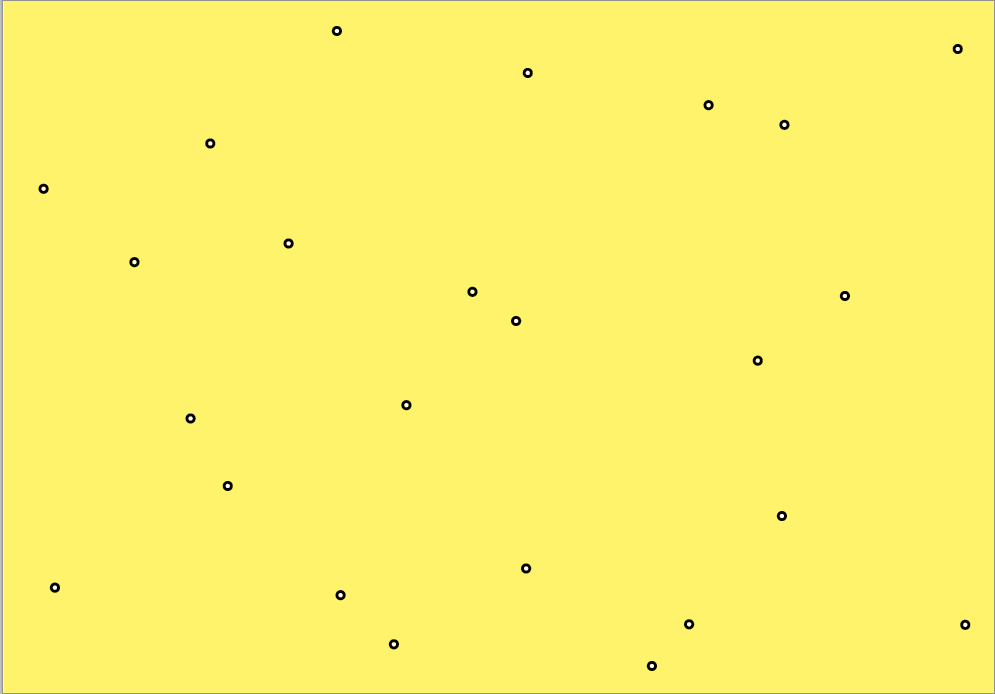
“One side is painted flat yellow, scored, slit and folded into book form,” says cataloguer Leonie Lane.
The other side (main photo) features the network that is the Northern Rivers system, holding samples of work from each of the selected artists own catalogues illustrating the above themes. Says Lane: “Together, with a collection of support material submitted to the DAAO, it’s a document that tables one representation of eco-feminist activism from the Northern Rivers region and this final resolution was a joy to produce. Not only that but we can all see the potential for future projects.”
The resulting exhibition curated by Jo Holder opened on 16 April 2016 and is currently on show at The Cross Arts Projects, Kings Cross 8 Llankelly Place, Kings Cross (off Orwell Street) Sydney. If you happen to be in Sydney go along to the closing ceremony at 2pm on Saturday 7 May.

